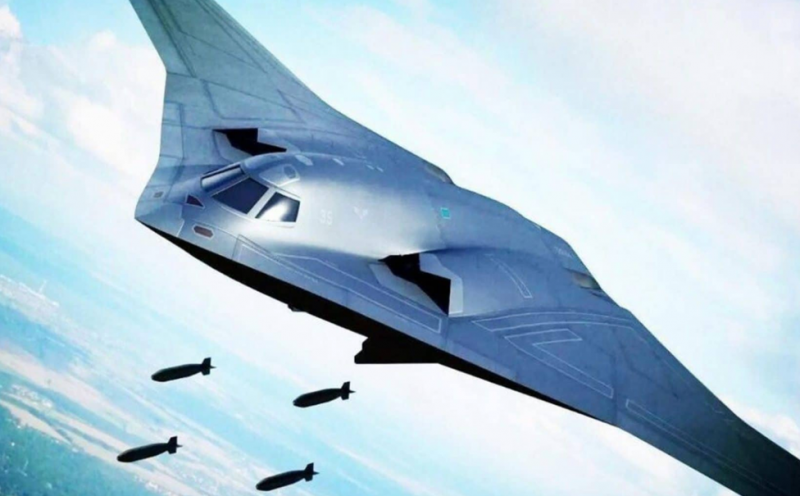
China: A plasma device has been developed that can significantly enhance the aerodynamic performance of a stealth bomber, according to a research team in northeastern China.
The contraption is a thin membrane strip that covers the front of an aircraft with a flying wing. The membrane detects danger in advance and ionizes the air molecules with high-voltage electricity, causing a shower of plasma – or electrically charged particles – over the wings when the speed of the wind blowing over the wings reaches a point. slows down resulting in a smaller shop.
Plasma showers can increase the air flow and lift coefficient of the aircraft by about a third. According to the researchers, this could prevent a stall even if the plane dropped with the nose tilted at an unusually low speed (108 km/h or 67 mph).
According to him, the new device can react to changes in air flow and react with comparable devices with much less energy than before.
In a paper published last week in the Journal of Aerospace Power, a peer-reviewed study conducted by the Chinese Society of Aeronautics and Astronautics, the team led by Professor Niu Zhongguo from the AVIC Aerodynamics Research Institute in Harbin said, "It's a great aircraft. Significance for the application of plasma active flow control technology in
A flat airframe without a tail is used by a stealth bomber to reduce the chances of radar detection. However, this wing-body configuration makes flight control more challenging, especially at slow speeds.
At Anderson Air Force Base in Guam, the largest US military installation in the western Pacific, a B-2 stealth bomber crashed in 2008. According to a US Air Force investigation, the crash was caused by a stall shortly after takeoff.
The B-2's flight control computer pulled the aircraft off the runway too quickly because it was unable to recognize the data generated by the malfunctioning sensor.
Although the two pilots managed to eject safely, the bomber, worth US$1.4 billion, was destroyed. According to Nieu and his colleagues, plasma technology could help avert such a costly accident.
According to the researchers, some locally swirling turbulence can build up over the wings when the aircraft lifts up at a relatively slow speed, separating the wing surface from the blowing air.
It was as if the plane was coming to a complete stop in completely still air from a physical point of view. It will fall like a stone while in flight.
According to Niue, the plasma can reduce turbulence and bring the moving air back into direct contact with the surface of the wings.
According to their paper, the technique appears to be working, based on the results of wind tunnel testing using a scale model.
According to Niue's team, the plasma device must have been triggered just before the aircraft entered stall, and it was very challenging to predict because turbulence could occur almost anywhere on the aircraft's large, wide wings.
China is competing with other countries to develop plasma technology for use in aircraft.
Researchers in the US, Germany and Japan have built drones with plasma actuators and demonstrated the technology's efficacy outside. However, most of these devices must be turned on or off manually, and they must operate nonstop for a predetermined amount of time.
According to Chinese researchers, plasma devices require precise control and high energy efficiency for practical applications.
Niue's group claimed in a separate paper released last year that their research had accelerated "engineering applications" of the technology.
According to publicly available information, Chinese scientists are developing plasma technology with funding from the government and military for several other uses, such as attitude control for hypersonic aircraft that can travel at five times the speed of sound. , a "plasmal cloak" that can enhance radar invisibility, and a "plasma antenna" that can pick up weak signals in a smaller format.
The only operational stealth bomber in the world is the Northrop Grumman B-2 Spirit, which entered service in 1997.
By 2026, the next generation B-21 Raider stealth bomber, which is currently under development, should be operational.
Last year, the People's Liberation Army reported that a covert heavy bomber was in development.
When Ji Heping, the party chief of the Aviation Industry Corporation of China's (AVIC) Chinese Flight Testing Establishment (CFTE), told state media last month that an aircraft of "historic and strategic importance" would soon make its maiden flight, it dismissed the rumours. Given that the stealth bomber, better known as the H-20, would soon be seen by the general public for the first time.
According to some military experts, the H-20 will enable China to challenge US military dominance in many areas of the world as it can travel long distances while carrying nuclear warheads and hypersonic missiles.
China's regulator set to release redacted data to settle US auditing dispute
China's second aircraft carrier Shandong going to start training in South China Sea
US eager to "manage differences" with China amid tensions over Taiwan visit